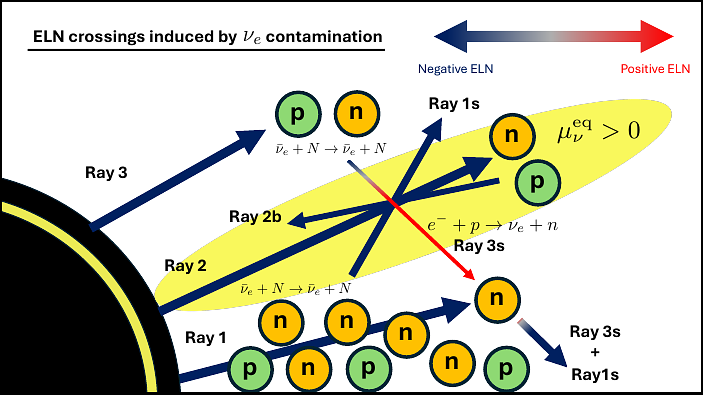Neutrino flavor instabilities in a binary neutron star merger remnant: Roles of a long-lived hypermassive neutron star

Neutrino flavor instabilities in a binary neutron star merger remnant: Roles of a long-lived hypermassive neutron star
Hiroki Nagakura, Kohsuke Sumiyoshi, Sho Fujibayashi, Yuichiro Sekiguchi, Masaru Shibata
AbstractUnderstanding the post-merger evolution of binary neutron star merger (BNSM) requires accurate modeling of neutrino transport and microphysics including neutrino flavor conversions. Many previous studies have suggested that fast flavor instability (FFI) and collisional flavor instability (CFI) pervade inner regions of BNSM remnant, and they could impact on fluid dynamics and r-process nucleosynthesis. In this work, we re-examine prospects of occurrences of FFI and CFI using Boltzmann neutrino transport, assuming a frozen fluid background obtained from a numerical relativity simulation of BNSM. We pay special attention to a case involving a long-lived ($>1\,$ s) hypermassive neutron star (HMNS). Apart from confirming the claim that these flavor instabilities can occur in BNSM remnants, some new insights are revealed. We identify multiple mechanisms responsible for generating electron neutrino lepton number angular crossings, corresponding to a key indicator of FFI onset, which differ notably from those in black hole (BH) accretion disk systems. We also find that the appearance of positive chemical potential of electron-type neutrinos is a necessary, though not sufficient, condition for FFI, which offers a valuable diagnostic tool for predicting FFI based solely on fluid properties. For CFI, their growth rates are generally lower than FFI, but they can persistently occur in most of the accretion disk up to $\sim 1\,$ s. We also find that neglecting contributions of heavy-leptonic neutrinos results in overestimating growth rate and area of unstable regions of CFI. Our result suggests that FFI (CFI) tends to occur transiently (persistently) and locally (widespread in the disk), and FFI is more sensitive to the central compact object (HMNS or BH) than CFI, though more self-consistent simulations with incorporating effects of flavor conversions are needed to confirm these claims.